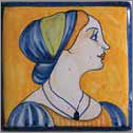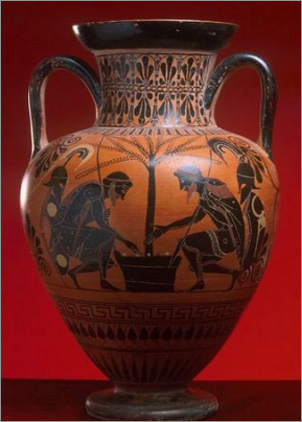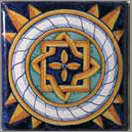 We were recently challenged by a Customer who was looking for some handmade tiles for her backsplash. She wanted figurative and geometric tiles to form a panel, but they had to be tiles with a history (!).
We were recently challenged by a Customer who was looking for some handmade tiles for her backsplash. She wanted figurative and geometric tiles to form a panel, but they had to be tiles with a history (!).
We thought the matter over and contacted the artists of a studio in Civita Castellana that is renowned for tiles. I had actually purchased the tiles for MY backsplash from them not long ago and both Manuela and I love the quality and look of their products.
To make a long story short they sent us their catalog and we are about to ship to this lucky lady exactly what she was looking for.
Now, you’ll be wondering why we are telling you this story.
The fact is that our Customer is not entirely happy only with the physical tiles. She knows she is opening her house to traditional artwork and wants to know more about it.
So we found some info on the history of pottery in Civita Castellana and we wish to share them with you. Hope you’ll enjoy it…
A short history of pottery from Civita Castellana
Civita Castellana is the modern name of a town that was founded by an ancient population – the Falischi – in the North-East of the Lazio region.
Pottery making was a very important economic resource already in the 8th century b.C. when the production of everyday tableware and storage pieces was enhanced with more refined ceramics, commissioned by the wealthier households.
In the beginning, the designs were very much similar to the ones in contemporary Greek pottery. Soon enough, though, the Faliscan ceramicists developed their own distinctive repertoire. Fish, birds and geometric designs were the most common figures.
At the end of the 6th century b.C.,  the Faliscan pottery was very popular among the neighboring countries and small industrially-organized companies were founded to meet the increasing demand. As a consequence, the power and wealth of the town increased enormously, together with the qualitative and aesthetic value of the Faliscan pottery. The wonderful vases with red figures on a black background and the architectural ceramic pieces represent the peak of their ceramic art.
the Faliscan pottery was very popular among the neighboring countries and small industrially-organized companies were founded to meet the increasing demand. As a consequence, the power and wealth of the town increased enormously, together with the qualitative and aesthetic value of the Faliscan pottery. The wonderful vases with red figures on a black background and the architectural ceramic pieces represent the peak of their ceramic art.
The first mention of pottery makers in modern history dates back to the Renaissance when they were recorded in the Artists and Craftsmen Register of Civita Castellana as “vascellari”.
However, it wasn’t until 1791 that the development of a pottery “industry” started. The key event was a visit of Giuseppe Valadier – a famous Italian architect and designer, the chief exponent of Neoclassicism in Italy – to Civita Castellana. He was hunting for the ideal location for a factory producing English earthenware – white porous pottery that is very tough and strong. He decided the small city was just perfect, both for the quality of the local clay and the availability of water and appropriate buildings.
The city  authorities were very happy to accommodate Valadier’s requests since they saw the opportunities related to the new business. They were actually right.
authorities were very happy to accommodate Valadier’s requests since they saw the opportunities related to the new business. They were actually right.
Industrially organized factories and artists’ studios have flourished since the end of the 18th century, giving way to the birth of a leading pottery hub.
